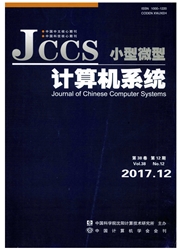

 中文摘要:
中文摘要:
提出一种仿生的面向多细胞阵列的分布式定序方法.该方法是基于生物学上的图式形成理论,通过催化剂-抑制剂模型在多细胞阵列中建立浓度梯度,并在此基础上进行定序.该方法具有如下的特点:跟现有的多细胞阵列维序方法相比,它采用主动的维序方式;跟传统的分布式定序方法相比,它不需要初始特征值就能实现定序和维序.故障注入实验表明,该定序方法较现有的方法具有更强的鲁棒性,在细胞出错的情况下能够重新建立浓度梯度和重新定序.此外,我们在Xilinx公司的型号为Virtex-6 XC6 VLX760的FPGA芯片上实现了5×5多细胞阵列,对浓度梯度建立和重建时间及硬件资源开销进行了评估.
 英文摘要:
英文摘要:
A bio-inspired distributed ranking approach for reconfigurable multicellular array architecture is presented in this paper. It is based on the pattern formation theory in biology. We first set up the morphogen gradient through the activator-inhibitor model, and then propose the distributed ranking method based on this. Our method has two characteristics: first, it's an active cell ranking and sequence number maintaining method compared to existing passive cell sequence number maintaining methods in multicellular array architectures; second, it doesn't need initial value to rank and maintain cell sequence numbers, which is different from ordinary distributed ranking methods. The results of fault-injection experiments show our method has better robustness than existing methods, that is, when cells die, concentration gradient is re-established and a new ranking process is started. We also implemented the 5×5 cellular army with a Xilinx Virtex-6 XC6VLX760 FPGA, and has evaluated the gradient establish or re-establish time, as well as the hardware cost.
 同期刊论文项目
同期刊论文项目
 同项目期刊论文
同项目期刊论文
 A fine-classification method and its hardware acceleration architecture for rotation invariant multi
A fine-classification method and its hardware acceleration architecture for rotation invariant multi Peak Temperature Reduction by Physical Information Driven Behavioral Synthesis with Resource Usage A
Peak Temperature Reduction by Physical Information Driven Behavioral Synthesis with Resource Usage A 期刊信息
期刊信息
